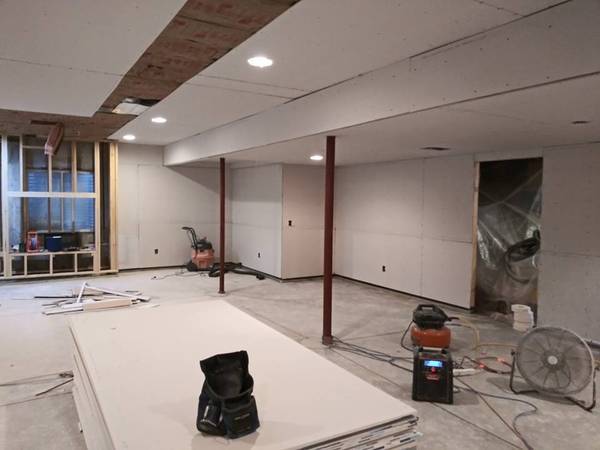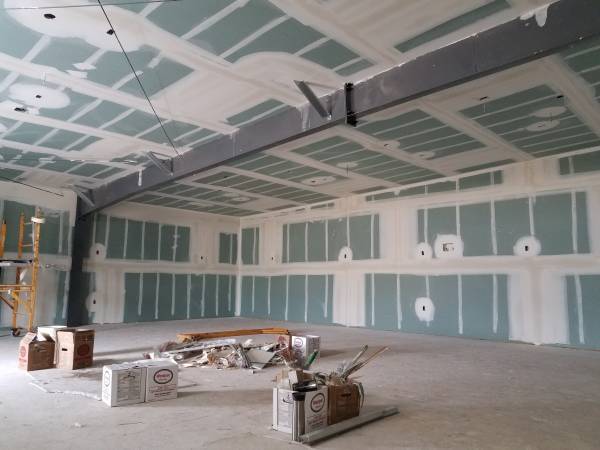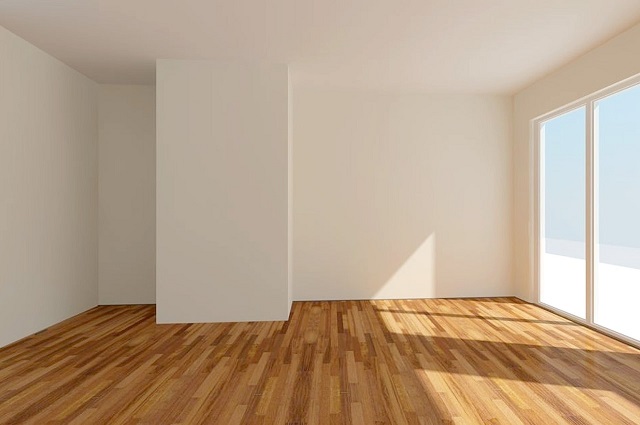Table of Contents
Key Factors to Consider Before Applying Joint Compound
Before diving into the process of applying joint compound, it is crucial to consider a few key factors to ensure a successful outcome. Assessing the condition of the surface is paramount, as any cracks, holes, or imperfections must be addressed before applying the compound. Additionally, understanding the type of joint compound needed for the specific project is essential, whether it be ready-mixed or setting-type compound.
Furthermore, evaluating the drying time of the joint compound is vital to schedule the project efficiently and avoid any setbacks. It is also important to have the necessary tools and materials on hand before starting the application process to streamline the workflow and achieve professional results. By taking these factors into account, you can set the stage for a smooth and successful joint compound application.
• Assess the condition of the surface for any cracks, holes, or imperfections
• Determine the type of joint compound needed for the project
• Evaluate the drying time of the joint compound to plan accordingly
• Ensure necessary tools and materials are available before starting application process
Tools and Materials Needed for Applying Joint Compound
When it comes to applying joint compound, having the right tools and materials is essential for a successful project. Some key items you will need include a taping knife, mud pan, sanding block, corner trowel, utility knife, and drywall tape. These tools will help you smooth out the compound, tape joints, and create a professional finish. Additionally, make sure to have a sanding sponge, primer/sealer, paint roller, and paintbrush on hand for finishing touches once the compound has dried.
In terms of materials, you will need joint compound, also known as mud, which comes in buckets or bags and is available in different drying times. Mesh tape or paper tape is necessary for reinforcing joints, while drywall screws or nails will be needed to secure the drywall panels. Lastly, don’t forget to have a good quality respirator, safety goggles, and gloves for protection while working with joint compound. Having these tools and materials readily available will make the application process smoother and more efficient.
Preparing the Surface for Joint Compound Application
To ensure a successful application of joint compound, it is imperative to properly prepare the surface beforehand. Begin by removing any loose debris, dust, or old joint compound using a stiff brush or scraper. It is essential that the surface is clean and free from any obstacles that may disrupt the adhesion of the new joint compound.
After cleaning the surface, inspect for any cracks, holes, or other imperfections that need to be patched before applying the joint compound. Use a suitable patching compound to fill in these areas and allow ample time for it to dry completely. Smooth out the patched areas using sandpaper to create a uniform surface for the joint compound application. Proper surface preparation is key to achieving a professional and long-lasting finish when applying joint compound.
Mixing the Joint Compound to the Right Consistency
Once you have selected the appropriate joint compound for your project, the next crucial step is ensuring that it is mixed to the correct consistency. This process is pivotal in guaranteeing a smooth and even application of the compound onto the surface. When combining the joint compound with water, start by pouring the compound into a clean bucket. Gradually add water while stirring continuously. It is imperative to add water slowly to avoid making the mixture too thin, which can result in an uneven finish. The ideal consistency is akin to that of thick pancake batter – not too runny but also not so thick that it is difficult to spread.
The key to achieving the right consistency lies in gradual additions of water and thorough mixing. It is advisable to use a mixing paddle attachment with a power drill for a uniform blend. The goal is to eliminate any lumps or dry spots within the compound to ensure a seamless application. Take care not to overmix the compound, as this can introduce air bubbles that may lead to imperfections on the surface. By adhering to the appropriate consistency, you lay the foundation for a successful joint compound application that will result in a professional and polished appearance.
Applying the First Coat of Joint Compound
To begin applying the first coat of joint compound, start by loading up your taping knife with a generous amount of compound. Spread the compound evenly over the joint, ensuring complete coverage. Press firmly to fill in any gaps and create a smooth surface. It is important to apply the compound slightly wider than the joint itself to ensure proper blending and feathering in later coats. This initial layer is meant to cover the joint and any underlying tape, but do not worry about achieving a perfectly smooth finish at this stage.
As you work on applying the first coat of joint compound, remember to maintain a consistent thickness throughout the joint. Avoid leaving any ridges or uneven areas as this will impact the overall finish. Work methodically from one end of the joint to the other, using long, smooth strokes to minimize excess compound buildup. Keep the edges of the joint tapered for easier blending in subsequent coats. It is normal for some imperfections to be present in this first coat, as the focus is on coverage rather than perfection.
Tips for Achieving a Smooth Finish with Joint Compound
To achieve a smooth finish with joint compound, it is essential to feather out the edges of each coat as you apply them. This helps blend the compound seamlessly with the surrounding surface, creating a more uniform and professional look. Additionally, using a wide taping knife or a drywall blade can aid in spreading the joint compound evenly and reducing the likelihood of visible lines or ridges in the finish.
Another tip for achieving a smooth finish is to apply thin layers of joint compound rather than trying to cover imperfections in one thick coat. Building up the compound gradually allows for better control over the drying and sanding process, resulting in a more level and polished surface. Remember to let each layer dry completely before sanding and applying the next coat for optimal results.
Dealing with Common Issues When Applying Joint Compound
If you encounter air bubbles or blistering in your joint compound while applying it to the surface, the most likely cause is insufficient mixing. Make sure to mix the joint compound thoroughly and consistently to avoid these issues. Use a proper mixing paddle and follow manufacturer’s instructions for the correct water-to-compound ratio to achieve a smooth consistency.
Another common issue that DIYers face is the formation of cracks in the dried joint compound. This can happen due to a few reasons such as applying the compound too thickly, not properly embedding joint tape, or excessive shrinkage during drying. To prevent cracking, apply thin layers of compound, bed the joint tape properly, and ensure the room has adequate ventilation for proper drying.
The Importance of Proper Drying Time for Joint Compound
After applying joint compound to repair or finish drywall, allowing proper drying time is crucial for achieving a smooth and durable finish. Rushing this step can result in cracking, shrinking, or bubbling of the compound, leading to unsightly blemishes that will require additional work to fix. Each coat of joint compound needs sufficient time to dry before sanding or applying subsequent coats to ensure a professional result.
Factors such as humidity, temperature, and thickness of the joint compound layer can influence the drying time required. In general, joint compound will dry faster in a well-ventilated room with low humidity and moderate temperatures. It is recommended to follow the manufacturer’s instructions for specific drying times based on the type of joint compound used. Patience during this phase of the project will pay off in the form of a flawless finish that enhances the overall appearance of the wall or ceiling.
Sanding Techniques for a Professional Finish
To achieve a smooth and professional finish when working with joint compound, proper sanding techniques are crucial. After the joint compound has dried completely, begin by using a fine-grit sandpaper to gently sand the surface. This step helps to smooth out any imperfections, ridges, or bumps left behind after the initial application. Be sure to sand in a circular motion, applying even pressure to avoid creating uneven patches.
Following the initial sanding, switch to a slightly coarser sandpaper to further refine the surface. Focus on feathering the edges of the joint compound to seamlessly blend it into the surrounding area for a flawless finish. Take care not to oversand, as this can result in weakening the joint compound and requiring additional touch-ups. Regularly check your progress by running your hand over the sanded area to ensure a consistent and smooth surface.
Applying Additional Coats of Joint Compound as Needed
When applying joint compound, it is common to require additional coats to achieve a smooth and seamless finish. After the initial coat has dried completely, carefully inspect the surface for any imperfections such as bumps, ridges, or air pockets. Use a taping knife to apply a second coat of joint compound, focusing on filling in any gaps or smoothing out uneven areas. It is essential to feather the edges of the new coat to blend it seamlessly with the existing compound, ensuring a professional result. Allow each additional coat to dry thoroughly before applying the next one to avoid cracking or shrinking.
As you continue to build up the layers of joint compound, pay attention to the texture and consistency of each coat. The goal is to achieve a flat and uniform surface that is ready for sanding and finishing. Depending on the size of the imperfections, you may need to apply multiple coats to ensure a flawless end result. Remember to always let each coat dry completely before proceeding with the next step in the joint compound application process.
How to Feather and Blend Edges for Seamless Results
To achieve seamless results when applying joint compound, it is crucial to master the technique of feathering and blending edges. Begin by applying a thin layer of joint compound beyond the edges of the repair area using a taping knife. Gently smooth the compound outwards to create a gradual transition between the patch and the surrounding wall. By feathering out the edges, you prevent noticeable ridges or bumps in the finished surface, ensuring a professional and polished look. Remember to feather in all directions to blend the joint compound evenly and avoid creating visible seams or lines in the final finish.
Once the initial coat of joint compound has been feathered out, allow it to dry completely before proceeding with additional coats or sanding. Inspect the patched area from multiple angles to ensure that the feathered edges are seamlessly integrated with the rest of the wall. If necessary, apply more joint compound and continue feathering until the transition is smooth and imperceptible. Taking the time to feather and blend edges properly will result in a flawless finish that seamlessly merges with the existing wall surface, leaving behind no trace of the repair work.
Using Mesh Tape for Stronger Joints
When aiming for stronger joints, incorporating mesh tape into the joint compound application process can significantly improve durability and reduce the risk of future cracking or separation. Mesh tape is a self-adhesive fiberglass or paper tape that reinforces the seams between drywall panels. To utilize mesh tape effectively, simply apply a thin layer of joint compound over the seam, then firmly press the mesh tape into the compound before smoothing out any excess material. The mesh tape acts as a supportive structure within the joint compound, ensuring a more secure bond between the drywall panels and enhancing the overall strength of the joint.
By utilizing mesh tape in your joint compound application, you can achieve more resilient and long-lasting results. This extra layer of reinforcement helps to prevent the formation of cracks and improves the overall structural integrity of the joint. Moreover, the use of mesh tape can also aid in creating a smoother finish, as it helps to bridge any slight gaps or irregularities between the drywall panels for a seamless appearance once the joint compound is applied and sanded.
Applying Texture to Joint Compound for Decorative Effects
To add depth and character to your walls, consider applying texture to joint compound. Texture can help mask imperfections and create a unique look in any room. By using different techniques such as stippling, splattering, or sponging, you can achieve a variety of decorative effects that enhance the overall aesthetic of the space.
Experimenting with texture can also provide a tactile element to your walls, making them visually intriguing. Whether you prefer a subtle texture for a more understated look or a more pronounced texture for a bold statement, the application of texture to joint compound allows for endless creative possibilities. With the right tools and techniques, you can transform plain walls into dynamic focal points that elevate the design of your home.
Cleaning Up After Applying Joint Compound
After applying joint compound, it is essential to clean up any tools and materials used in the process. Begin by wiping down all tools, such as trowels and knives, with a damp cloth to remove any excess compound. Make sure to thoroughly clean the edges and corners of the tools to prevent dried compound from affecting future applications. Next, rinse out any buckets or trays that were used to mix the compound, ensuring that no residue remains that could contaminate future batches. Additionally, wipe down any surfaces that may have come into contact with the compound to prevent it from hardening and becoming difficult to remove. Proper cleaning of all tools and surfaces will help maintain their longevity and ensure a smooth application process in the future.
Final Inspections and Touch-Ups for a Flawless Result
Upon completion of the joint compound application, it is crucial to perform thorough final inspections to ensure a flawless result. This involves carefully examining the entire surface for any imperfections such as air bubbles, ridges, or uneven textures. By running your hands lightly over the dried joint compound, you can easily detect any rough spots that may require additional attention. Make sure to inspect the corners and edges as well, as they are often areas where mistakes are most noticeable. Once any issues are identified, proceed with the necessary touch-ups to achieve a seamless finish.
When addressing touch-ups, it is vital to use the same type of joint compound and tools as in the initial application process. Feather out any rough edges or fill in any small gaps with precision to blend the repaired areas seamlessly with the rest of the surface. Allow sufficient drying time for the touch-ups to set before lightly sanding and smoothing out the affected areas. By taking the time to conduct thorough final inspections and executing meticulous touch-ups, you can ensure that your joint compound application results in a professional and flawless finish.



